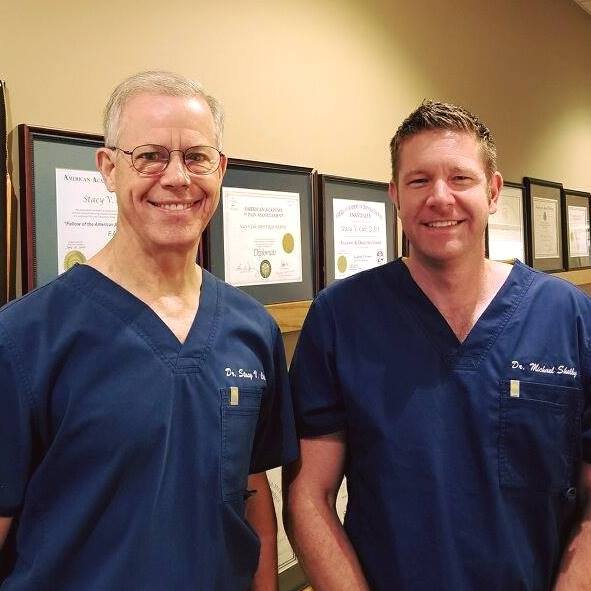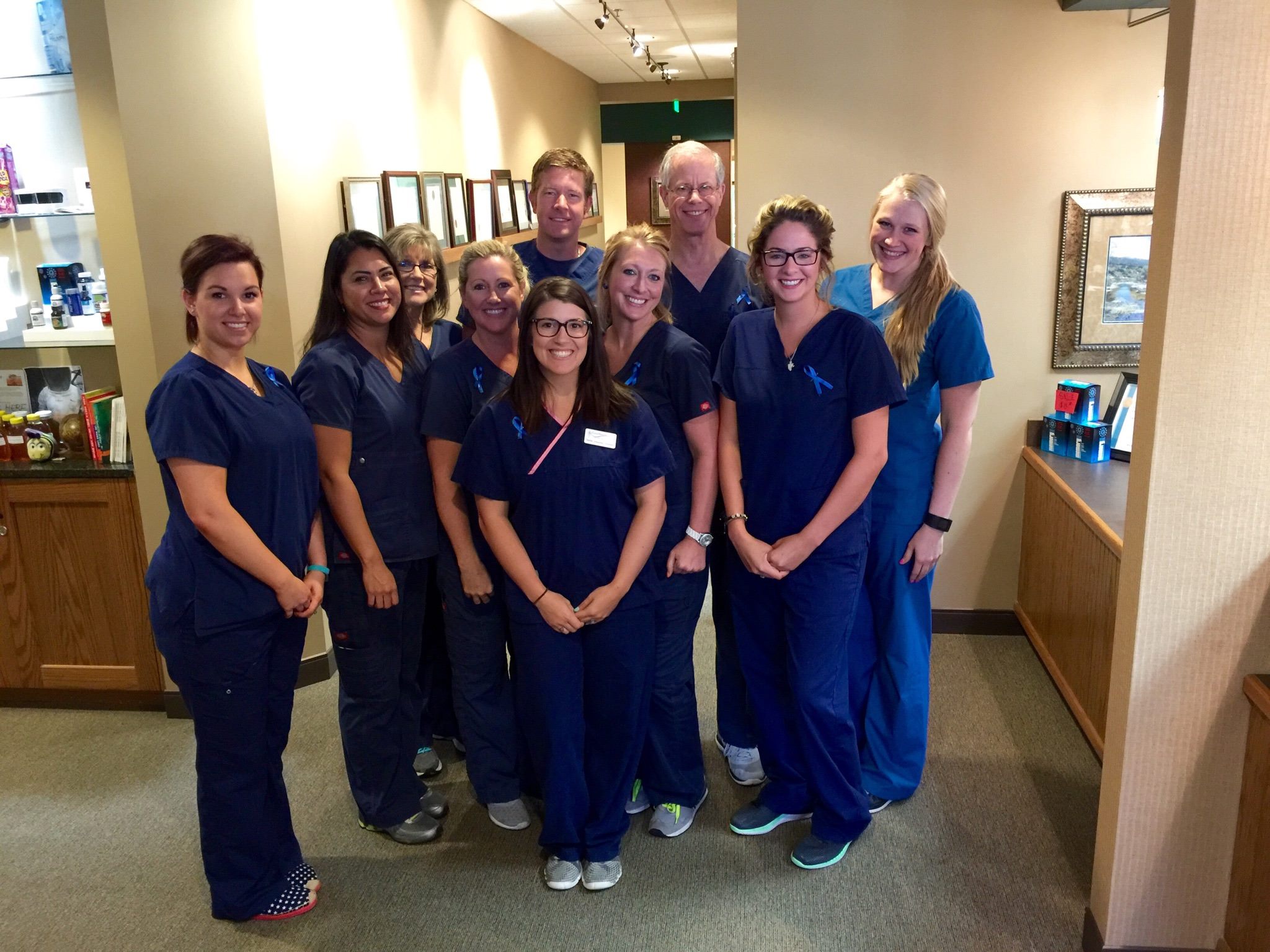Dr. Michael Shelby grew up in Lewistown, Montana and comes from a family of dentists. His father is still practicing dentistry in Montana and his brother is a Periodontist. He received his undergraduate in Biology from the University of Montana and received his dental education from Nova Southeastern University, Fort Lauderdale Florida in 2004. Dr. Shelby practiced dentistry in Northern Montana for nearly 10 years where he provided modern dentistry to a large area. In 2013 Dr. Shelby, his wife Kathleen along with their four daughters moved to Texas. Exercise and diet are very important to the Shelby family and they enjoy numerous activities together that promote a healthy body. He is a firm believer in our whole body approach to dentistry and enjoys spending time with each patient educating them on prevention and their treatment options available. Along with being SMART certified through the IAOMT, he is also a member of the American Academy of Implant Dentistry and the American Academy of Cosmetic Dentistry. He truly values a great relationship with his patients and the community. Dr. Shelby continues to stay up with all the new technology and advances in the field of dentistry.
Invisalign®
Invisalign® treatment consists of a series of custom-made aligning trays. The dentist changes the trays every several weeks to fit the new tooth configuration. In addition to the reduced visual impact, Invisalign® aligning trays can be temporarily removed for important occasions – meaning that treatment duration is patient-controlled. A great number of people report complete satisfaction with both the Invisalign® treatment and the stunning results.
Invisalign® corrects the same dental problems as traditional metal braces; the only difference is that Invisalign® trays are almost invisible to the naked eye, and can be removed at will.
Here are some problems that are commonly corrected with Invisalign®:
- Overcrowding – This occurs when there is too little space for the teeth to align normally in the mouth. Overcrowding can cause tooth decay and increase the likelihood of gum disease.
- Large gaps between teeth – This can sometimes occur because teeth are missing or because the jaw continues to grow abnormally.
- Crossbite – This common dental problem occurs when one or multiple upper teeth bite inside the lower teeth. As a consequence, uneven wear can lead to bone erosion and gum disease.
- Overbite – This problem occurs when the upper teeth project further than, or completely cover, the lower teeth. Eventually, jaw pain and TMJ may occur.
- Underbite – This is the inverse of the overbite; the lower teeth project further than, or completely cover, the upper teeth. Eventually, jaw pain and TMJ can occur.
Sealants
A sealant is a thin, plastic coating applied to the chewing surface of molars, premolars and any deep grooves (called pits and fissures) of teeth. More than 75% of dental decay begins in these deep grooves. Teeth with these conditions are hard to clean and are very susceptible to decay. A sealant protects the tooth by sealing deep grooves, creating a smooth, easy to clean surface.
Sealants can protect teeth from decay for many years, but need to be checked for wear and chipping at regular dental visits.
Reasons for sealants:
- Children and teenagers – As soon as the six-year molars (the first permanent back teeth) appear or any time throughout the cavity prone years of 6-16.
- Adults – Tooth surfaces without decay that have deep grooves or depressions.
- Baby teeth – Occasionally done if teeth have deep grooves or depressions and child is cavity prone.
What do sealants involve?
Sealants are easily applied by your dentist or dental hygienist and the process takes only a couple of minutes per tooth.
The teeth to be sealed are thoroughly cleaned and then surrounded with cotton to keep the area dry. A special solution is applied to the enamel surface to help the sealant bond to the teeth. The teeth are then rinsed and dried. Sealant material is carefully painted onto the enamel surface to cover the deep grooves or depressions. Depending on the type of sealant used, the material will either harden automatically or with a special curing light.
Dental implants
Dental implants are a great way to replace missing teeth and also provide a fixed solution to having removable partial or complete dentures. Implants provide excellent support and stability for these dental appliances.
Dental implants are artificial roots and teeth (usually titanium) that are surgically placed into the upper or lower jaw bone by a dentist or Periodontist – a specialist of the gums and supporting bone. The teeth attached to implants are very natural looking and often enhance or restore a patient’s smile!
Dental implants are strong and durable and will last many years. On occasion, they will have to be re-tightened or replaced due to normal wear.
Reasons for dental implants:
- Replace one or more missing teeth without affecting adjacent teeth.
- Resolve joint pain or bite problems caused by teeth shifting into missing tooth space.
- Restore a patient’s confident smile.
- Restore chewing, speech, and digestion.
- Restore or enhance facial tissues.
- Support a bridge or denture, making it more secure and comfortable.
Porcelain Crowns (Caps)
A crown (or cap) is a covering that encases the entire tooth surface restoring it to its original shape and size. A crown protects and strengthens tooth structure that cannot be restored with fillings or other types of restorations.
Although there are several types of crowns, porcelain (tooth colored crown) are the most popular, because they resemble your natural teeth. They are highly durable and will last many years, but like most dental restorations, they may eventually need to be replaced. Porcelain crowns are made to match the shape, size, and color or your teeth giving you a natural, long-lasting beautiful smile.
Reasons for crowns:
- Broken or fractured teeth.
- Cosmetic enhancement.
- Decayed teeth.
- Fractured fillings.
- Large fillings.
- Tooth has a root canal.
Porcelain Fixed Bridges
A dental bridge is a fixed (non-removable) appliance and is an excellent way to replace missing teeth.
There are several types of bridges. You and your dentist will discuss the best options for your particular case. The “traditional bridge” is the most popular type and is usually made of porcelain fused to metal. Porcelain fixed bridges are most popular because they resemble your natural teeth. This type of bridge consists to two crowns that go over two anchoring teeth (abutment teeth) and are attached to pontics (artificial teeth), filling the gap created by one or more missing teeth.
Dental bridges are highly durable and will last many years; however, they may need replacement or need to be re-cemented due to normal wear.
Reasons for a fixed bridge:
- Fill space of missing teeth.
- Maintain facial shape.
- Prevent remaining teeth from drifting out of position.
- Restore chewing and speaking ability.
- Restore your smile.
- Upgrade from a removable partial denture to a permanent dental appliance.





